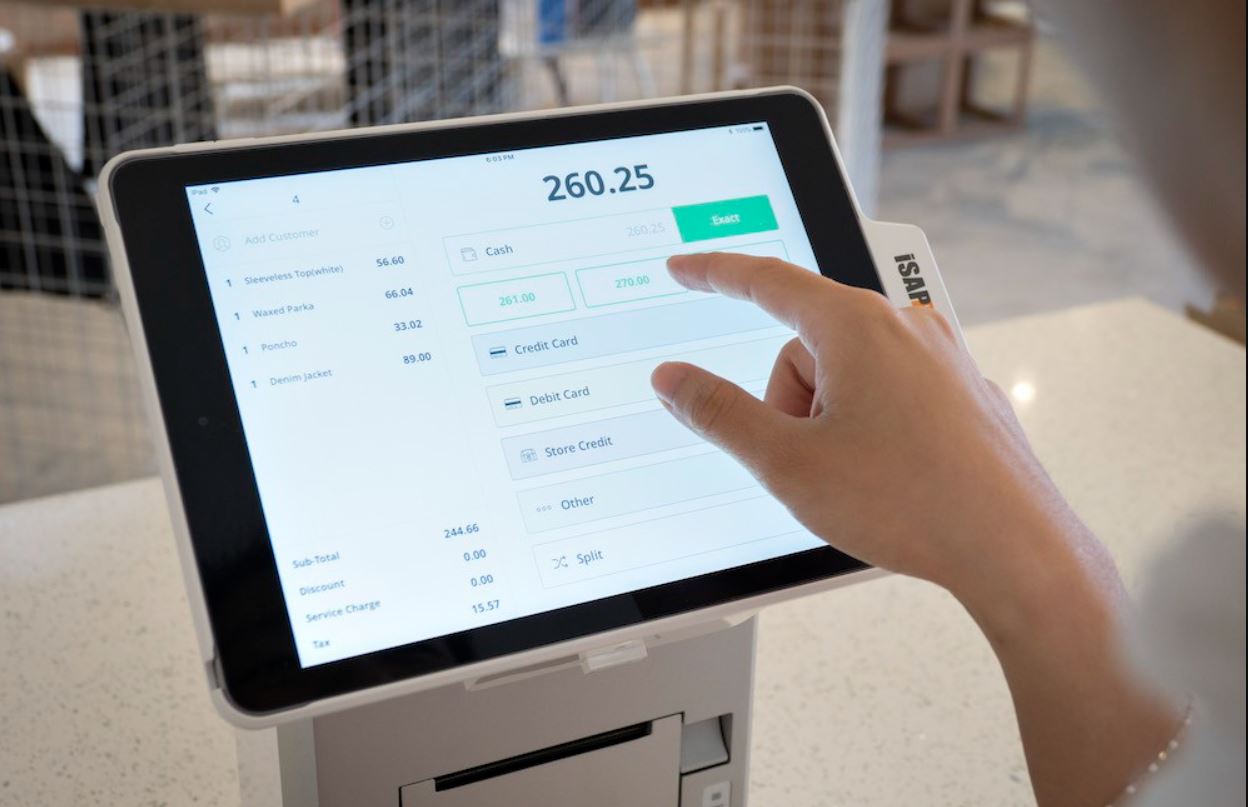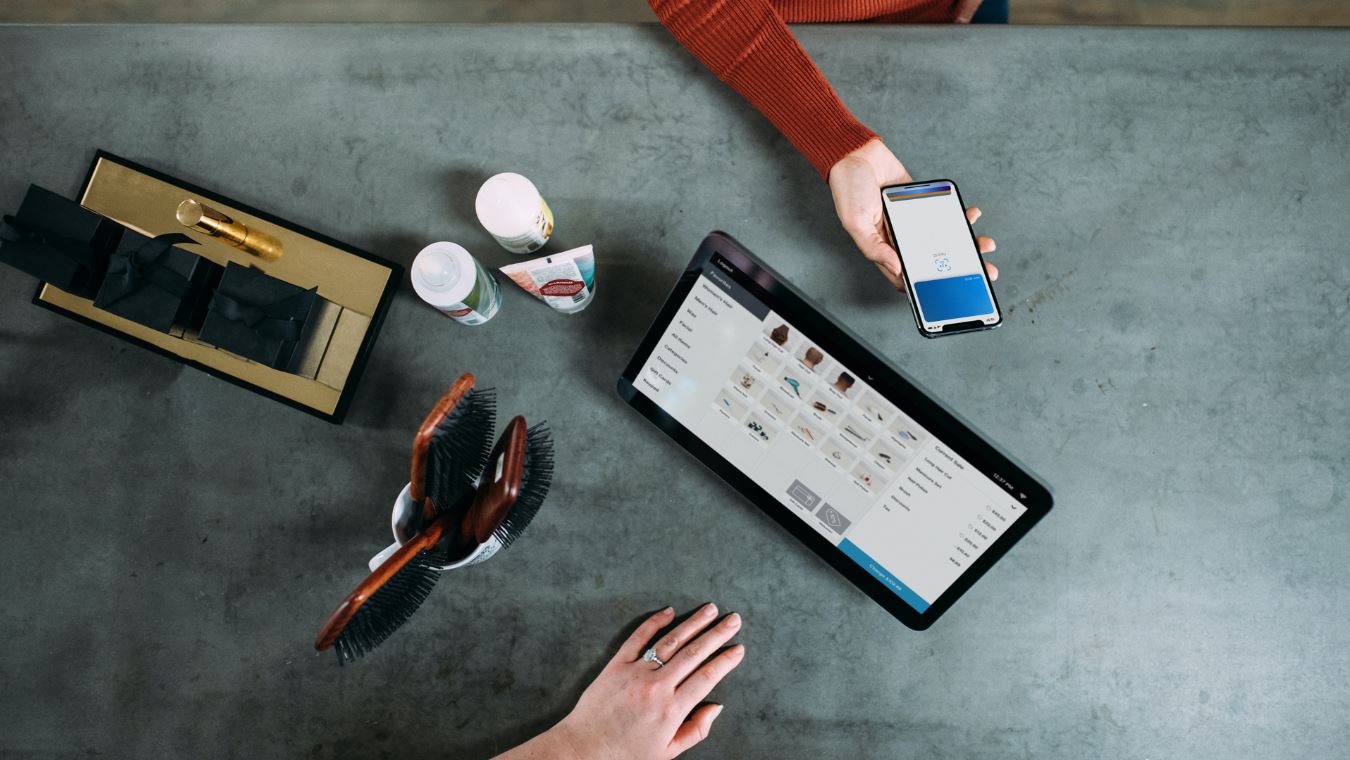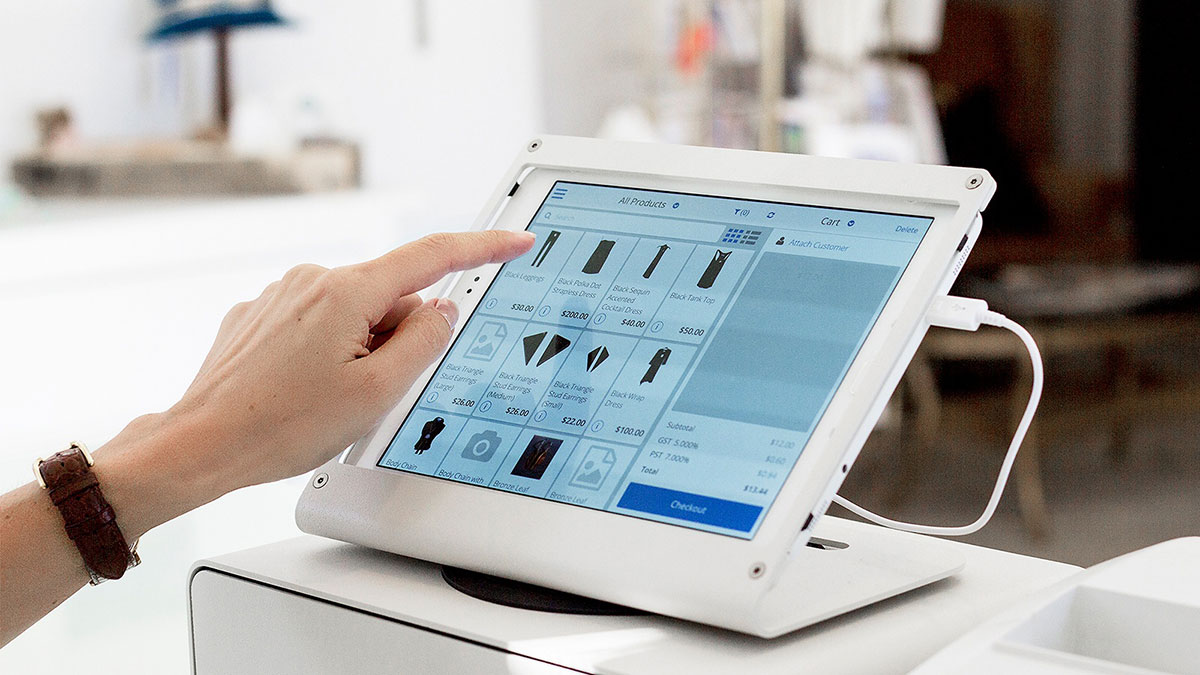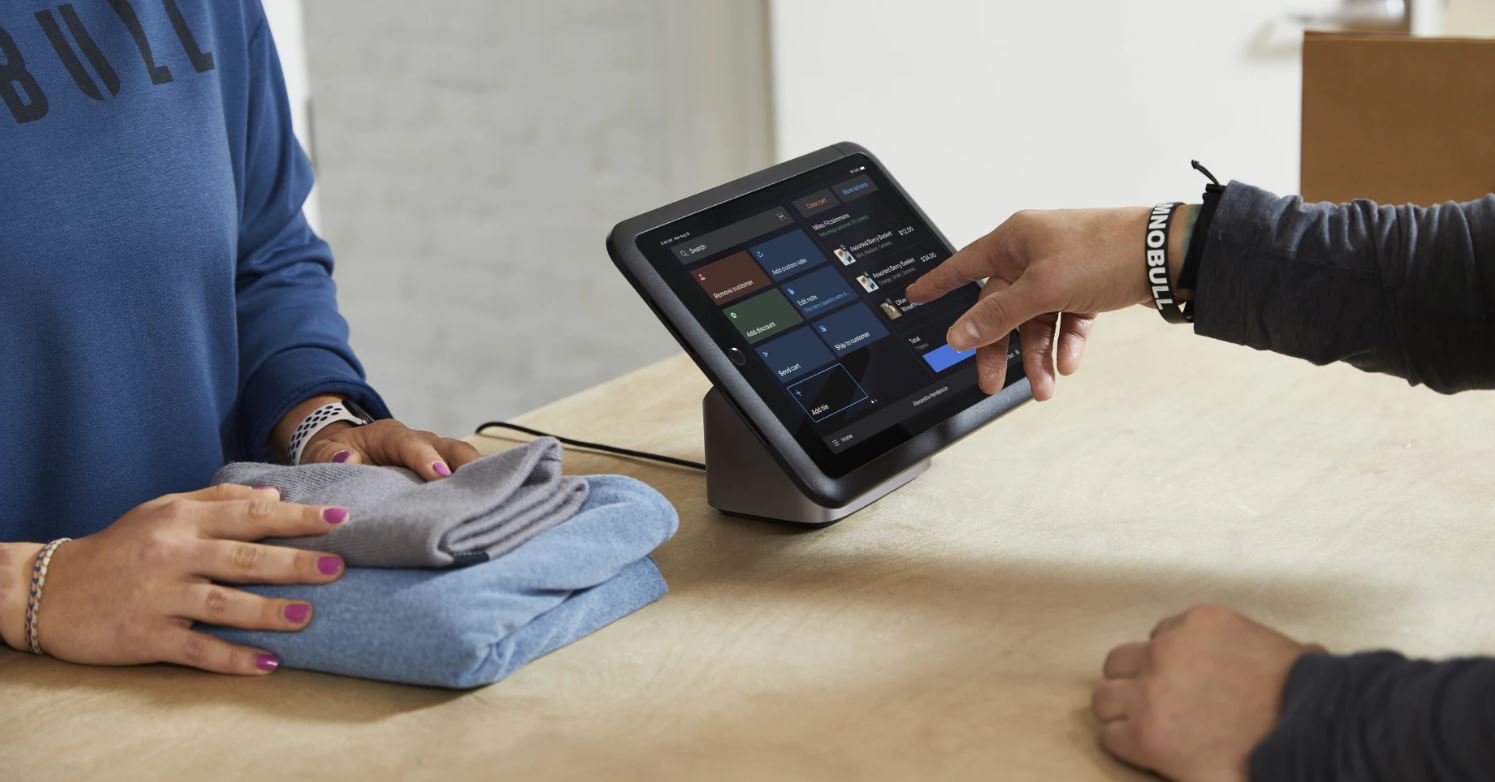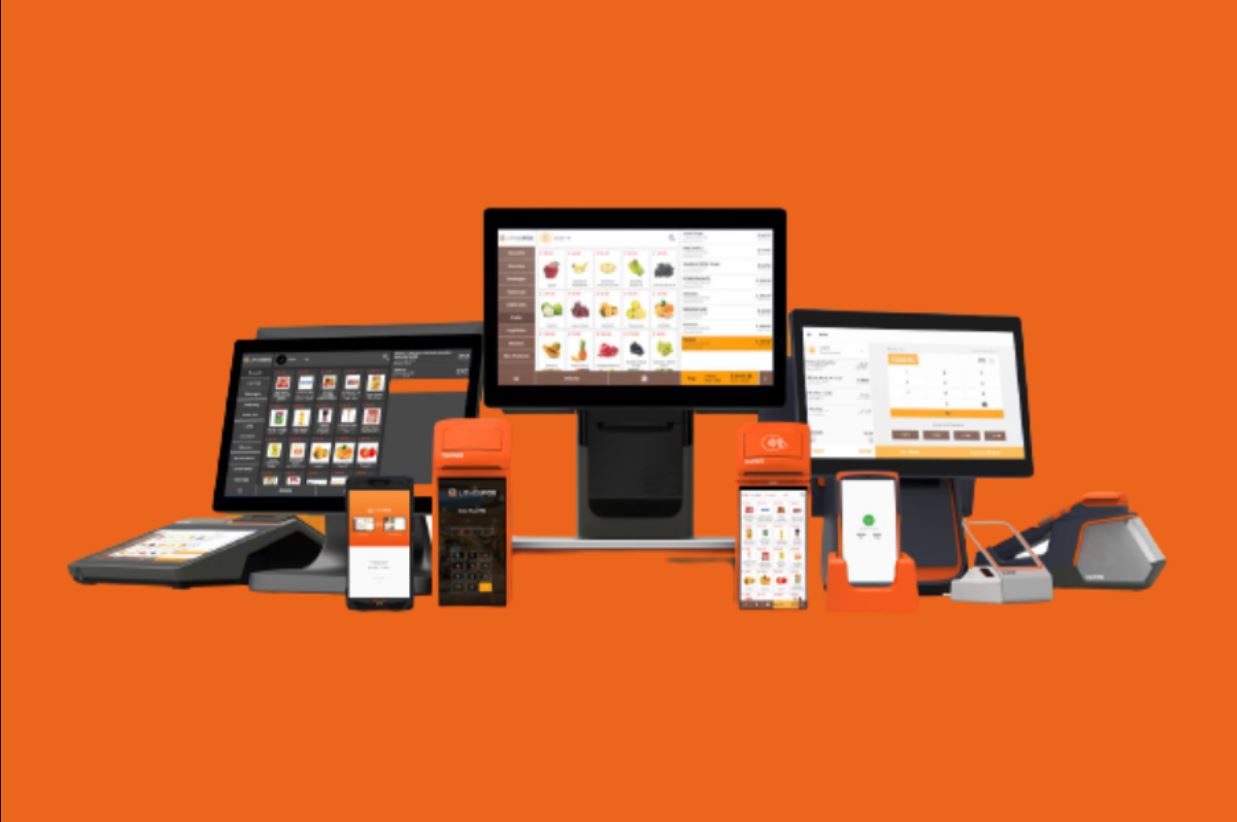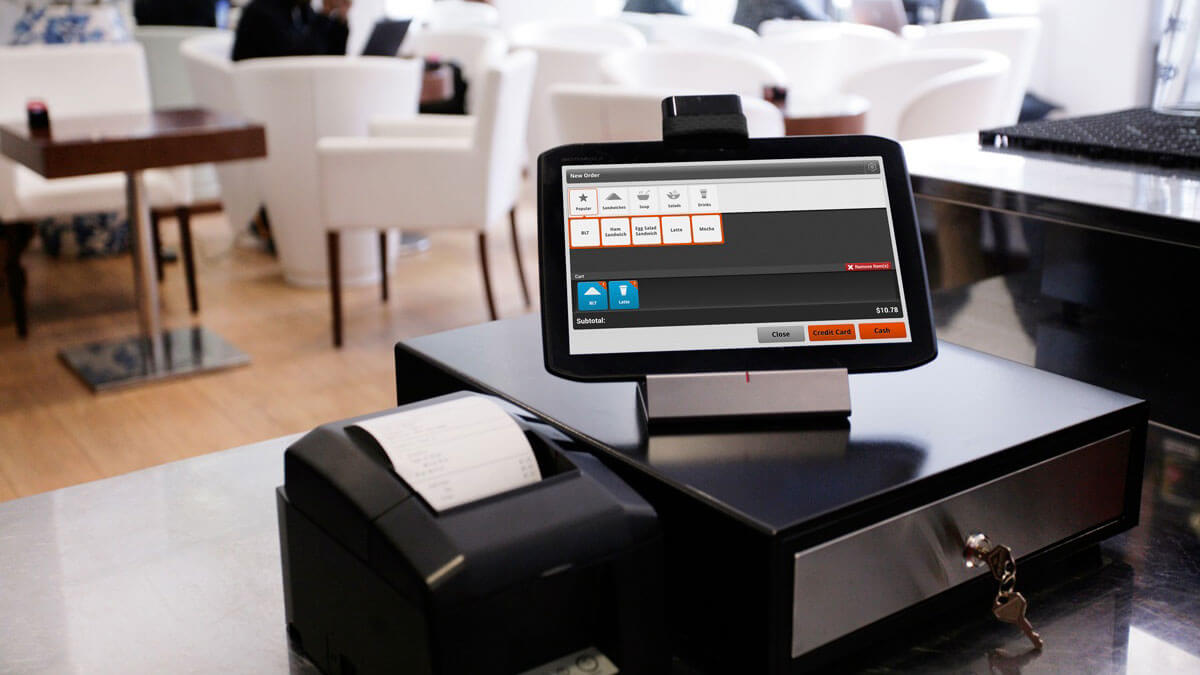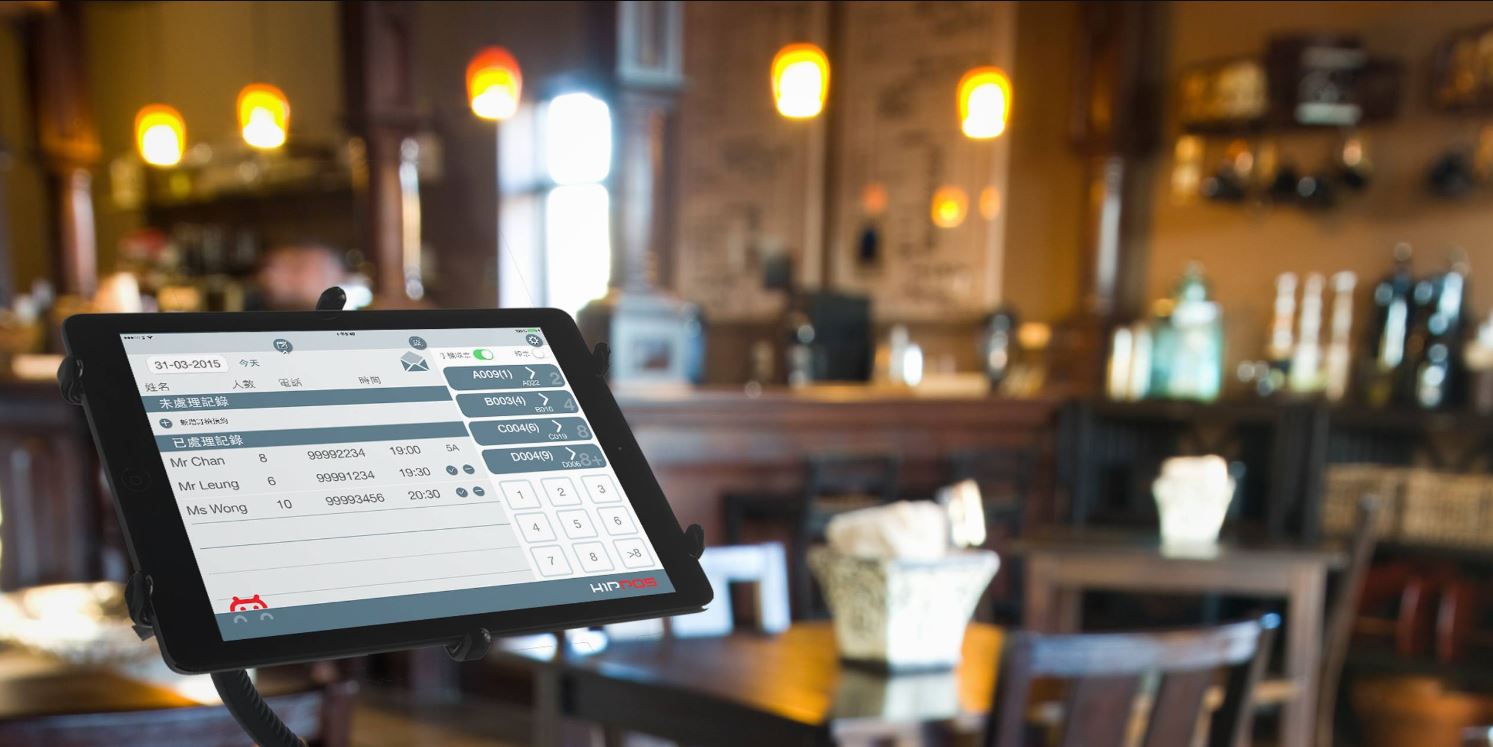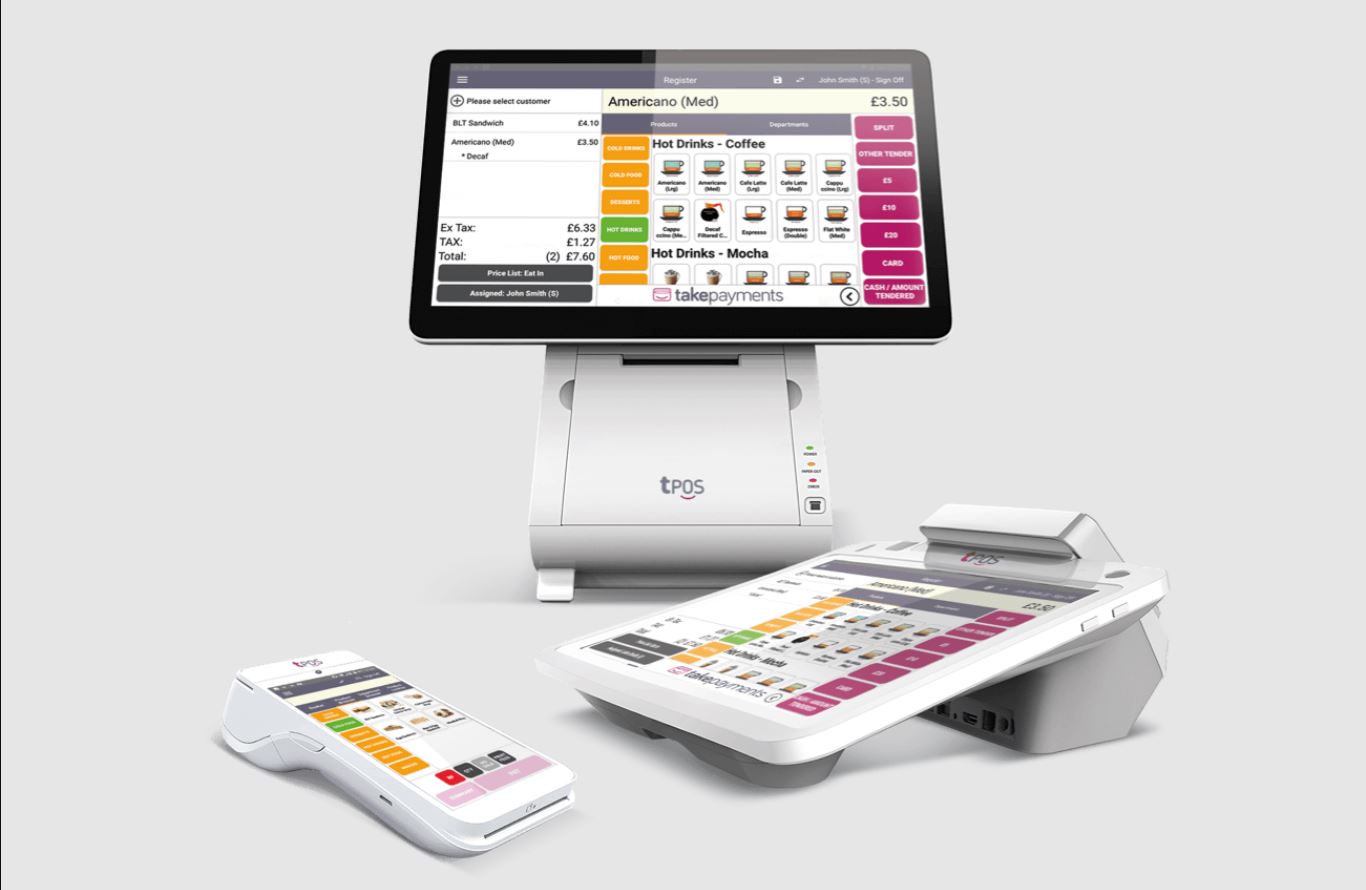Introduction
Welcome to the world of point of sale (POS) systems! In this technologically advanced era, businesses of all sizes are utilizing POS systems to enhance their operations and improve customer experiences. A user-friendly POS system can streamline transactions, simplify inventory management, and provide valuable insights into business performance.
But with so many options available, choosing the right POS system can be overwhelming. That’s why we’re here to help! In this article, we will explore the benefits of a user-friendly POS system and provide you with a list of the top five easiest POS systems to use.
Before we dive into the specifics, let’s briefly discuss the advantages of a user-friendly POS system. A user-friendly interface can significantly reduce employee training time, minimize errors, and increase overall efficiency. It allows employees to quickly navigate through the system, process transactions seamlessly, and focus on delivering exceptional customer service.
In addition to enhanced efficiency, a user-friendly POS system also offers better data accuracy. The system should have a straightforward menu layout and intuitive features that enable employees to input correct information effortlessly. This helps eliminate pricing discrepancies, inventory errors, and other costly mistakes.
Furthermore, a user-friendly POS system can provide businesses with valuable insights to drive growth. It should generate detailed sales reports, track inventory levels in real-time, and help identify popular products and customer purchasing patterns. By having access to these insights, businesses can make strategic decisions to optimize their operations and boost profitability.
With these advantages in mind, it’s crucial to consider certain factors before choosing a POS system for your business. Factors such as ease of use, scalability, compatibility with your hardware and software, customer support, and cost are essential to ensure that the POS system meets your specific requirements.
Now that we’ve covered the importance of a user-friendly POS system and the key factors to consider, let’s explore the top five easiest POS systems available in the market today. These systems have been selected based on their intuitive interfaces, robust features, and positive customer feedback.
Benefits of a User-Friendly POS System
A user-friendly point of sale (POS) system can be a game-changer for businesses, providing numerous benefits that directly impact customer satisfaction, employee productivity, and overall business profitability. Let’s delve into some of the key advantages of using a user-friendly POS system:
- Efficiency and Speed: An intuitive interface and streamlined workflows make it easier for employees to process transactions quickly and accurately. With a user-friendly POS system, staff members can serve customers more efficiently, reducing waiting times and enhancing the overall shopping experience.
- Inventory Management: Keeping track of inventory can be a complex task, but a user-friendly POS system simplifies the process. With features like automated inventory tracking, real-time updates, and customizable alerts for low stock, businesses can ensure optimal inventory management while minimizing human error.
- Employee Training: The easier a POS system is to use, the quicker and more effectively employees can be trained on its functionalities. A user-friendly interface with intuitive navigation reduces the learning curve, allowing new hires to become proficient in operating the system in a short period of time.
- Customer Satisfaction: A smooth and seamless checkout process contributes to a positive customer experience. A user-friendly POS system enables faster transaction processing, accurate order entries, and easy integration with payment options, enhancing customer satisfaction and loyalty.
- Insights and Analytics: A user-friendly POS system can generate detailed reports on sales, inventory, and customer data. These insights allow businesses to identify trends, track performance, and make data-driven decisions to optimize operations, improve marketing strategies, and increase profitability.
- Integration and Scalability: A user-friendly POS system should be compatible with other business tools and easily integrate with third-party software such as accounting programs, e-commerce platforms, and customer relationship management (CRM) systems. This compatibility allows businesses to seamlessly manage various aspects of their operations and adapt as they grow.
In summary, a user-friendly POS system offers several benefits, including improved efficiency, streamlined inventory management, reduced training time, enhanced customer satisfaction, valuable insights, and seamless integration with other business tools. By choosing a user-friendly POS system, businesses can optimize their operations, deliver exceptional customer experiences, and drive long-term success.
Factors to Consider When Choosing a POS System
When selecting a point of sale (POS) system for your business, it’s essential to evaluate various factors to ensure that you choose the system that best meets your specific needs. Consider the following factors before making a decision:
- Ease of Use: The ease of use of a POS system is critical, especially for employees who will be using it daily. Look for a system with an intuitive interface, easy navigation, and a short learning curve. A user-friendly POS system will reduce training time and minimize errors during transactions.
- Scalability: Consider your business’s future growth prospects and ensure that the POS system can easily scale to accommodate your changing needs. You may want to expand to multiple locations or add new features as your business grows, so a scalable system will save you from having to switch to a different platform in the future.
- Compatibility: Assess the compatibility of the POS system with your existing hardware and software infrastructure. Ensure that it seamlessly integrates with your payment processors, printers, scanners, and other peripherals. Additionally, check if the system supports integration with other essential software tools like accounting software, CRM systems, and e-commerce platforms.
- Customer Support: Reliable customer support is crucial when dealing with any technical issues or questions related to your POS system. Look for a provider that offers 24/7 customer support, a comprehensive knowledge base, and prompt response times. Read reviews or ask for recommendations to gain insights into the quality of customer support provided by different POS system providers.
- Security: Protecting customer data and safeguarding against cyber threats is a top priority. Ensure that the POS system adheres to the latest security standards and features measures such as encrypted data transmission, secure servers, and PCI compliance. Look for a system that offers robust user authentication, role-based access control, and data backup mechanisms.
- Cost: Consider both the upfront costs and ongoing expenses associated with implementing a POS system. Compare the pricing models of different providers, including hardware costs, software licensing fees, maintenance costs, and any additional fees for support or upgrades. Remember to factor in the long-term return on investment (ROI) and the value the system will bring to your business.
By carefully considering these factors, you can make an informed decision when selecting a POS system that aligns with your business goals, enhances efficiency, and provides a seamless customer experience.
Top 5 Easiest POS Systems to Use
Now that we understand the importance of a user-friendly POS system and the factors to consider when choosing one, let’s explore the top five easiest POS systems available in the market today. These systems have been selected based on their intuitive interfaces, outstanding user experience, and positive customer feedback.
- Point of Sale (POS) System A: This POS system stands out for its user-friendly interface and robust features. It offers easy navigation, customizable menus, and a simple order management system. With real-time inventory tracking, detailed reporting, and customer management tools, POS System A provides a seamless experience for both businesses and customers.
- Point of Sale (POS) System B: POS System B takes simplicity to another level with its user-friendly design. It offers a clean and intuitive interface that requires minimal training. Its touch-screen functionality, quick-order features, and integrated payment options make it a breeze for employees to process transactions. Additionally, it provides valuable sales and inventory analytics for business owners.
- Point of Sale (POS) System C: Ease of use is at the core of POS System C. With its straightforward layout, intuitive navigation, and drag-and-drop functionality, this system makes the checkout process seamless. It also offers robust inventory management features, such as barcode scanning and automated stock alerts, ensuring efficient operations for businesses of all sizes.
- Point of Sale (POS) System D: With its user-friendly interface and intuitive touch-screen functionality, POS System D is a popular choice for businesses. Its customizable dashboard and easy-to-use inventory management system simplify daily operations. System D also offers detailed analytics and reporting capabilities, helping businesses make informed decisions for growth.
- Point of Sale (POS) System E: POS System E excels in terms of user-friendliness and adaptability. Its intuitive interface allows for quick and effortless order processing, making it an ideal choice for businesses with high-volume transactions. The system also offers extensive customization options, providing businesses with the flexibility they need to tailor the system to their unique requirements.
These top five easiest POS systems have been highly rated by users for their simplicity, functionality, and exceptional user experience. Each system offers a range of features to meet the specific needs of different businesses, making them a reliable choice for enhancing operational efficiency.
Remember, when choosing a POS system, it’s essential to consider your business requirements, growth plans, compatibility, and support. Assessing these factors will help you make an informed decision and find the perfect POS system that caters to your specific needs.
Point of Sale (POS) System A
Point of Sale (POS) System A is an exceptional choice for businesses looking for an easy-to-use and feature-rich POS system. Its user-friendly interface and intuitive design make it a popular option among both small and large businesses.
One of the standout features of POS System A is its customizable menu layout. Businesses can easily organize their products and services into categories, subcategories, and modifiers, providing quick and smooth order processing. The user-friendly design allows employees to navigate the system effortlessly, minimizing errors and reducing training time.
In addition to its ease of use, POS System A offers robust inventory management capabilities. Real-time inventory tracking ensures that businesses always have accurate information about stock levels. Automated alerts can be set up for low stock, enabling businesses to restock items proactively and avoid inventory shortages. This feature significantly improves operational efficiency and provides a seamless shopping experience for customers.
POS System A also offers a range of valuable reporting and analytics features. Business owners can access detailed sales reports, track employee performance, and identify trends that can help them make informed decisions. The system’s reporting capabilities provide actionable insights, allowing businesses to optimize their operations and maximize profitability.
Another significant advantage of POS System A is its customer management functionality. The system allows businesses to maintain customer profiles, capture customer data, and track purchase history. This information can be used to personalize the customer experience, implement targeted marketing campaigns, and drive customer loyalty and satisfaction.
POS System A is known for its reliability, security, and seamless integration with other business tools. It offers built-in security features to protect sensitive customer data, such as encrypted transactions and user authentication. The system can also integrate with various payment processors, printers, and other hardware, ensuring seamless interactions with existing infrastructure.
In summary, Point of Sale (POS) System A is a top choice for businesses seeking an easy-to-use and feature-rich POS system. Its intuitive interface, customizable menu layout, robust inventory management, and powerful reporting capabilities make it an ideal solution for businesses of all sizes. The system’s reliability, security, and seamless integration further enhance its value in optimizing operations and delivering exceptional customer experiences.
Point of Sale (POS) System B
Point of Sale (POS) System B is a user-friendly and highly intuitive POS system that is designed to simplify operations for businesses. With its sleek and easy-to-navigate interface, this system is well-regarded for its seamless user experience.
The standout feature of POS System B is its clean and intuitive design, which requires minimal training for employees to become proficient. The touch-screen functionality and quick-order features allow for effortless transaction processing, reducing waiting times and improving customer satisfaction. Employees can easily navigate through the system, select products and services, and input customer information with ease.
POS System B also boasts integrated payment options, making it effortless for businesses to accept various forms of payment. From cash to credit cards and digital wallets, this system offers seamless payment processing, enhancing convenience for both businesses and customers.
In addition to its user-friendly interface, POS System B offers robust reporting and analytics capabilities. Business owners can generate detailed sales reports, track inventory levels, and analyze product performance. These insights enable data-driven decision-making and help businesses optimize their operations, identify trends, and refine their strategies for growth.
Another notable feature of POS System B is its compatibility with multiple hardware devices. It can seamlessly integrate with receipt printers, barcode scanners, and other peripherals, providing a complete and efficient solution for businesses.
With its cloud-based system, POS System B offers the advantage of remote access. Business owners can access real-time data, monitor sales, and manage inventory from anywhere, enhancing flexibility and convenience.
Customer service is a priority for POS System B, with 24/7 customer support and a comprehensive knowledge base. This ensures that businesses have the necessary assistance to address any technical issues promptly.
Overall, Point of Sale (POS) System B is a top choice for businesses seeking an intuitive and user-friendly POS system. Its clean interface, integrated payment options, robust reporting capabilities, and compatibility with various hardware devices make it a highly reliable solution for businesses of all sizes. The system’s commitment to customer support and remote access further solidify its value proposition for businesses looking for an easy-to-use and feature-rich POS system.
Point of Sale (POS) System C
Point of Sale (POS) System C is renowned for its simplicity and ease of use. Designed with a user-friendly interface and intuitive features, it stands out as a top choice for businesses seeking a streamlined and efficient POS system.
The key attraction of POS System C is its straightforward layout and intuitive navigation. The system’s menu design allows for easy customization, enabling businesses to organize their products and services into categories and subcategories. The drag-and-drop functionality further enhances the user experience, making it simple for employees to add items to an order, apply modifiers, and complete transactions seamlessly.
When it comes to inventory management, POS System C shines. The system features barcode scanning capabilities, allowing businesses to quickly and accurately manage their inventory. Automated stock alerts can be set up to notify businesses when stock levels are low, ensuring timely replenishment. These inventory management tools contribute to efficient operations, reducing stock discrepancies and enhancing customer satisfaction.
POS System C also offers robust reporting and analytics features. Business owners can access detailed sales reports, analyze top-selling items, and track employee performance. The system’s analytics capabilities provide valuable insights to guide decision-making and optimize business operations.
Additionally, POS System C emphasizes customer management. It allows businesses to create and maintain customer profiles, keeping track of customer details and purchase history. This data can be used to personalize the shopping experience, optimize marketing efforts, and foster customer loyalty.
Integration capabilities are another strength of POS System C. It seamlessly integrates with various hardware, such as receipt printers and barcode scanners, ensuring a cohesive and efficient system. Furthermore, the system can be integrated with other business tools, including accounting software and CRM systems, allowing for seamless data flow and streamlined operations.
POS System C has a user-friendly interface both on the front-end and the back-end, making it easy for businesses to set up, manage, and customize their system. It offers a responsive and intuitive user experience, reducing the learning curve for employees and facilitating smooth operations.
In summary, Point of Sale (POS) System C is a go-to choice for businesses seeking a user-friendly and efficient POS system. Its straightforward layout, efficient inventory management tools, comprehensive reporting features, customer management capabilities, and integration capabilities make it an ideal solution for businesses of all sizes. POS System C simplifies operations, enhances productivity, and allows businesses to focus on delivering exceptional customer experiences.
Point of Sale (POS) System D
Point of Sale (POS) System D stands out as a user-friendly and intuitive solution that simplifies the transaction process for businesses. Its easy-to-use interface and comprehensive features make it a popular choice among both small and large enterprises.
The user-friendly interface of POS System D provides a seamless experience for employees. With its intuitive touch-screen functionality and simplified menu layout, employees can quickly navigate through the system, select products or services, and process transactions efficiently. This user-friendly design minimizes training time and reduces the likelihood of errors during the checkout process.
POS System D offers powerful inventory management capabilities, allowing businesses to maintain accurate stock levels. The system enables barcode scanning for streamlined inventory tracking and automatic stock alerts to ensure proactive inventory management. These features help businesses avoid stockouts and optimize their inventory levels, contributing to efficient and smooth operations.
Another noteworthy feature of POS System D is its robust reporting and analytics capabilities. The system generates detailed sales reports, tracks product performance, and provides insights into customer buying patterns. Business owners can leverage these analytics to make informed decisions and adjust their business strategies for improved profitability.
Additionally, POS System D offers comprehensive employee management features. It allows businesses to track employee sales performance, manage shifts and schedules, and assign specific roles and permissions. This functionality helps optimize workforce efficiency and streamline operations.
POS System D is known for its seamless integration capabilities. It can be easily integrated with various hardware devices, such as receipt printers and scanners. Moreover, the system offers compatibility with other essential business tools, including accounting software and CRM systems, to ensure a connected and streamlined workflow.
The security features of POS System D are also worth mentioning. The system provides robust security measures, such as user authentication and data encryption, to protect sensitive customer data and ensure compliance with industry regulations. These security features give businesses peace of mind and build trust among customers.
In summary, Point of Sale (POS) System D is a preferred choice for businesses seeking a user-friendly and feature-rich POS system. Its intuitive interface, efficient inventory management, powerful reporting capabilities, comprehensive employee management features, seamless integration capabilities, and robust security measures make it a valuable asset for businesses of all sizes. POS System D streamlines operations, enhances productivity, and enables businesses to provide exceptional customer service.
Point of Sale (POS) System E
Point of Sale (POS) System E is a highly customizable and user-friendly POS system that offers businesses flexibility and ease of use. With its intuitive interface and adaptable features, this system provides a seamless experience for both employees and customers.
The key highlight of POS System E is its user-friendly interface, which allows businesses to customize the system to their specific needs. The system offers extensive customization options, enabling businesses to tailor the menu layout, product categories, and modifiers to match their unique requirements. This flexibility empowers businesses to create a streamlined workflow that suits their operations.
POS System E also offers a range of intuitive features that simplify the transaction process. From easy product selection to effortless order management, the system’s interface is designed to minimize errors and reduce training time. Employees can quickly navigate through the system, add products or services to an order, and apply modifiers with ease.
The adaptability of POS System E extends to its integration capabilities. It seamlessly integrates with various hardware devices, including printers, scanners, and payment processors. The system can also be integrated with other essential business tools such as accounting software and CRM systems, creating a unified ecosystem that enhances operational efficiency.
Another notable feature of POS System E is its extensive reporting and analytics capabilities. The system generates detailed sales reports, tracks inventory levels, and provides insights into customer behavior and preferences. These analytics help businesses identify trends, optimize operations, and make data-driven decisions to drive growth and profitability.
Customer management is another strength of POS System E. The system allows businesses to maintain customer profiles, track purchase history, and implement loyalty programs. This functionality enables businesses to provide personalized experiences, build customer loyalty, and drive repeat sales.
POS System E also prioritizes data security. It offers robust security measures such as user authentication, data encryption, and secure servers to protect sensitive customer information. These security features give businesses peace of mind and build trust with customers.
In summary, Point of Sale (POS) System E is a highly customizable and user-friendly POS system that offers businesses flexibility and ease of use. Its intuitive interface, adaptability, seamless integration capabilities, extensive reporting and analytics features, customer management functionalities, and robust security measures make it an excellent choice for businesses seeking a comprehensive and user-friendly POS solution. POS System E empowers businesses to optimize their operations, deliver exceptional customer experiences, and drive long-term success.
Conclusion
Choosing a user-friendly point of sale (POS) system is crucial for businesses looking to streamline their operations and enhance customer experiences. The top five easiest POS systems discussed in this article – POS System A, POS System B, POS System C, POS System D, and POS System E – offer intuitive interfaces, robust features, and seamless user experiences that cater to businesses of all sizes.
These POS systems not only provide ease of use but also offer additional benefits such as efficient inventory management, comprehensive reporting, customer management tools, integration capabilities, and robust security measures. Together, these features ensure smooth operations, data-driven decision-making, improved customer satisfaction, and protection of sensitive data.
When selecting a POS system, it’s essential to consider factors such as ease of use, scalability, compatibility, customer support, and cost. Assessing these factors will help you find a POS system that aligns with your specific business needs and goals.
Ultimately, a user-friendly POS system empowers businesses to enhance efficiency, maximize productivity, and provide exceptional customer service. By choosing one of the top five easiest POS systems, businesses can optimize their operations, gather valuable insights, and drive long-term success.







